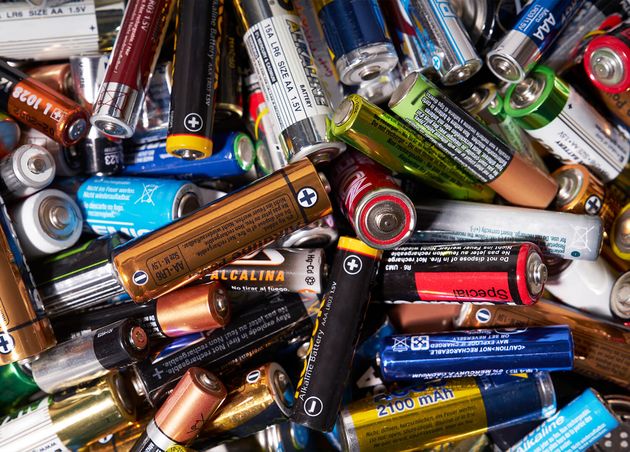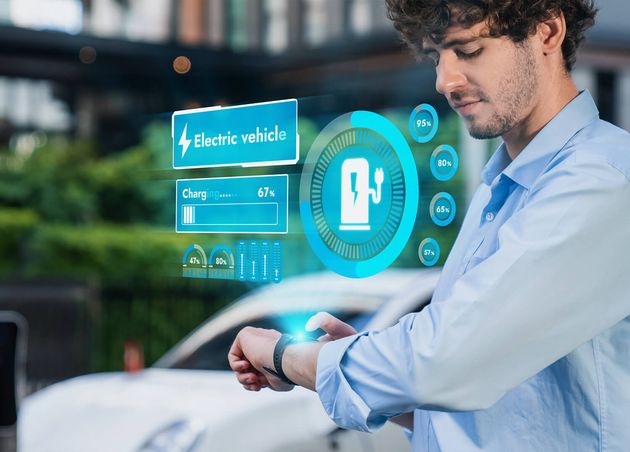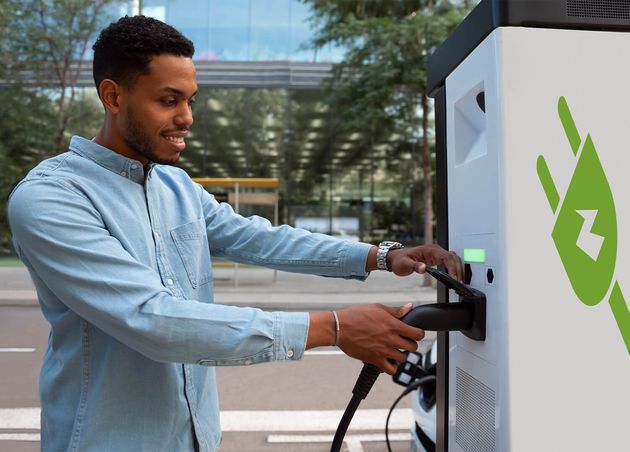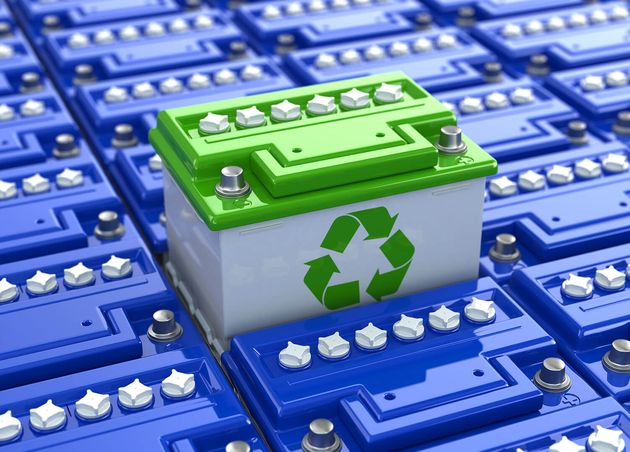Eco-Friendly Choice: Your Guide to Rechargeable Batteries
Batteries are today's go-to power source, as we carry portable electronic devices everywhere. From smartphones to laptops, they power our daily essentials. However, this convenience comes with a significant downside to our environment.
Despite their indispensability, batteries pose environmental risks due to the heavy metals they contain. Improper disposal only worsens the situation, contaminating soil and water sources with hazardous substances. The issue is compounded by incorrect incineration methods, releasing toxins into the atmosphere. Addressing the disposal problem is crucial. Proper handling of battery waste is essential to safeguarding the environment and public health.
Unfortunately, this issue often flies under the radar, especially in developing areas. Understanding the environmental impact of batteries is vital in our journey towards sustainability. We can work towards a cleaner, safer future by embracing responsible disposal practices and considering eco-friendly alternatives like rechargeable batteries.
🌏 Eco Fact!
In 1993, more than 12 billion disposable batteries were sold globally.
Strategies for Sustainable Battery Use
To address the challenges posed by haphazardly discarded batteries, three key strategies have emerged: Reduce, Recharge, and Recycle. Before delving into these strategies, it's crucial to understand the implications of battery waste on human health and the environment.
At its core, a battery operates through an electrochemical oxidation-reduction cycle, converting chemical energy into electrical energy without moving parts. This unique mechanism enables batteries to efficiently power various devices, from everyday essentials to sophisticated gadgets.
Understanding Different Battery Types
When it comes to batteries, there are essentially two main types: non-rechargeable primary batteries and rechargeable secondary batteries. These power sources are what keep a wide range of devices running smoothly, from basic everyday items like watches and calculators to more advanced gadgets like smartphones and laptops.
Batteries are everywhere in our daily lives, seamlessly fitting into various aspects of modern living. Whether they're powering crucial medical equipment, essential tools, or our favorite entertainment and communication devices, batteries are the backbone of our technology-driven society.
Exploring the Risks and Dangers of Non-Rechargeable Batteries
Non-rechargeable batteries pose significant risks due to the toxic heavy metals they contain, such as cadmium, mercury, nickel, lead, copper, and zinc. These metals can harm both the environment and public health. While some batteries, like zinc, carbon, and alkaline manganese types, are considered non-hazardous because they lack certain toxic metals, others containing mercury, lead, and cadmium are hazardous under the Basel Convention.
Improper disposal of waste batteries exacerbates these risks, as they often end up in landfills alongside regular trash. Once in landfills, these batteries release hazardous chemicals and also heavy metals into the soil and water, contaminating ecosystems and making them unsuitable for human and wildlife consumption.
Furthermore, burning these batteries can release dangerous metals into the atmosphere through stack gases or accumulate toxic residues in ash, further contributing to environmental pollution and health hazards.
Long-Term Effects of Batteries on the Environment
Batteries operate as they convert chemical energy into electrical energy over time. While this process powers our devices, it also poses environmental risks due to the chemicals involved, such as cadmium, lithium, lead, and mercury, which can be harmful.
Batteries are safely contained during regular use, minimizing user risks thanks to stringent manufacturing regulations. However, disposal presents a challenge. When batteries end their lifespan and are discarded with household waste, they often end up in landfills. Here, they gradually degrade, releasing harmful compounds into the environment.
While we may not immediately feel the effects of battery disposal, the long-term consequences can be significant. As batteries break down over time, they continue to pose risks to ecosystems, persisting in the environment for years.
Addressing Concerns about Human Health
The impact of batteries on human health is a significant concern, primarily when they adversely affect the environment. While the harsh chemicals in batteries pose risks, direct contact with them is unlikely unless the battery is damaged.
However, indirect exposure through environmental contamination caused by batteries left in landfills is the real danger. Hazardous metals and compounds found in batteries, known carcinogens or cancer-causing substances, can seep into the surrounding environment, increasing the risk of health problems.
Although pinpointing the exact effects of improper battery disposal on public health is challenging, studies have linked regular landfill disposal to elevated cancer risk and other health issues. Therefore, ensuring proper battery disposal practices is essential for safeguarding human health and the environment.
Empowering Sustainable Practices: The Three R's of Battery Management
Three effective strategies have emerged to address the considerable volume of waste batteries ending in trash cans: Reduce, Recharge, and Recycle. These approaches offer practical solutions to the challenges associated with battery disposal.
Reduce
When it comes to managing battery waste, reducing consumption is key to minimizing environmental impact. Rather than solely relying on recycling or disposal solutions, reducing the production and usage of batteries can yield significant environmental benefits.
-
Make Informed Choices: Before purchasing batteries, assess whether they are indispensable for the device in question. Reserve battery usage for items without electricity, such as military equipment, cars, wristwatches, calculators, toys, and remote controls. Using batteries only when essential can decrease overall consumption and minimize waste generation.
-
Plan Ahead: Before purchasing batteries, evaluate your needs and ensure you have an adequate supply. Consider the specific requirements of all your devices and determine the appropriate type and quantity of batteries needed. Asking questions like "What type of battery does my device require?" and "How many batteries are necessary?" can help prevent overconsumption and unnecessary waste.
-
Choose Sustainable Options: Opt for batteries with fewer or no harmful materials whenever possible to reduce the quantity of hazardous waste requiring special disposal methods. Consider swapping out primary non-rechargeable batteries for secondary rechargeable ones to minimize the need for disposable batteries. Additionally, select energy-efficient appliances and electronics, such as LED-based lighting solutions, to lessen battery dependency and extend their lifespan.
-
Proper Storage and Care: Store them in a cool, dry environment to prolong battery life. Low temperatures help maintain chemical stability and prevent premature degradation. However, ensure batteries return to room temperature before use to maximize voltage output and performance.
By implementing these strategies, individuals can proactively reduce battery waste and mitigate its environmental impact. Making informed choices, planning, and prioritizing sustainability are crucial steps toward achieving a greener future.
Recharge
The surge in portable electronics usage, from laptops to cell phones, has underscored the importance of rechargeable batteries. While they were once deemed impractical due to charging requirements and shorter lifespans, technological advancements have revolutionized rechargeable battery performance.
Modern rechargeable batteries, deficient self-discharge variants, come pre-charged and boast extended shelf lives, retaining up to 70% of their capacity for months. These batteries can also be recharged hundreds of times over several years, offering substantial cost savings and environmental benefits compared to disposable alternatives.
The advantages of rechargeable batteries extend beyond economics:
-
Economical: Despite potentially higher initial costs and the need for a charger, rechargeable batteries can be used over 500 times, making them more cost-effective in the long run than disposable batteries.
-
Waste Reduction: Rechargeable batteries significantly reduce the volume of discarded batteries, minimizing environmental contamination from toxic components leaching into landfills.
-
Resource Conservation: By eliminating the need for frequent battery replacements, rechargeable batteries help conserve natural resources like water, fossil fuels, and minerals used in battery manufacturing.
-
Environmental Impact: Compared to disposable batteries, rechargeable batteries save vast amounts of water and electricity and contribute to reduced fuel demand. They also have substantially lower impacts on non-renewable resources, ozone depletion, global warming, water pollution, and air acidification over their lifespan.
Embracing rechargeable batteries is economically prudent and a sustainable choice that mitigates environmental harm and conserves resources for future generations. Individuals can make a meaningful contribution to a greener, more sustainable world by opting for rechargeable solutions.
Recycle
Recycling is pivotal in diverting thousands of tons of used batteries away from incinerators and landfills. Within these batteries lie valuable metals such as cadmium, nickel, cobalt, zinc, copper, silver, and aluminum, which can be extracted and repurposed as secondary raw materials.
In addition to metals, batteries contain various other materials like acids, salts, and polymers, which are responsibly separated and disposed of from municipal waste. By recycling batteries, we breathe new life into discarded items and prevent toxins like mercury, lead, and cadmium from contaminating the soil, water, and atmosphere.
The recycling process conserves valuable resources and safeguards our environment by mitigating pollution and reducing the need for raw materials extraction. By participating in battery recycling initiatives, individuals contribute to a circular economy while protecting natural ecosystems and promoting a cleaner, healthier planet for future generations.
🌏 Eco Trivia!
In Canada, sales of non-rechargeable batteries reached about 671 million in 2007.
Embracing the Power of Rechargeable Batteries for a Greener Future
Rechargeable batteries offer a simple yet impactful way to reduce our environmental impact. We can significantly lessen the harmful environmental effects by opting for rechargeable options whenever possible.
When a rechargeable battery is repeatedly used to generate the same amount of energy as several single-use batteries, it conserves non-renewable natural resources and reduces waste. While rechargeable batteries may entail higher upfront costs, their long-term benefits, including lower overall expenses, quickly outweigh the initial investment.
Deciding to switch to rechargeable batteries not only benefits the environment but also aligns with sound financial principles. By investing in rechargeable solutions and embracing sustainable practices, we can minimize our environmental footprint without compromising on the convenience of our electronic gadgets.
Let's power our devices responsibly and pave the way for a greener, more sustainable future. Together, we can make a difference one battery at a time.
Eco Bear
























